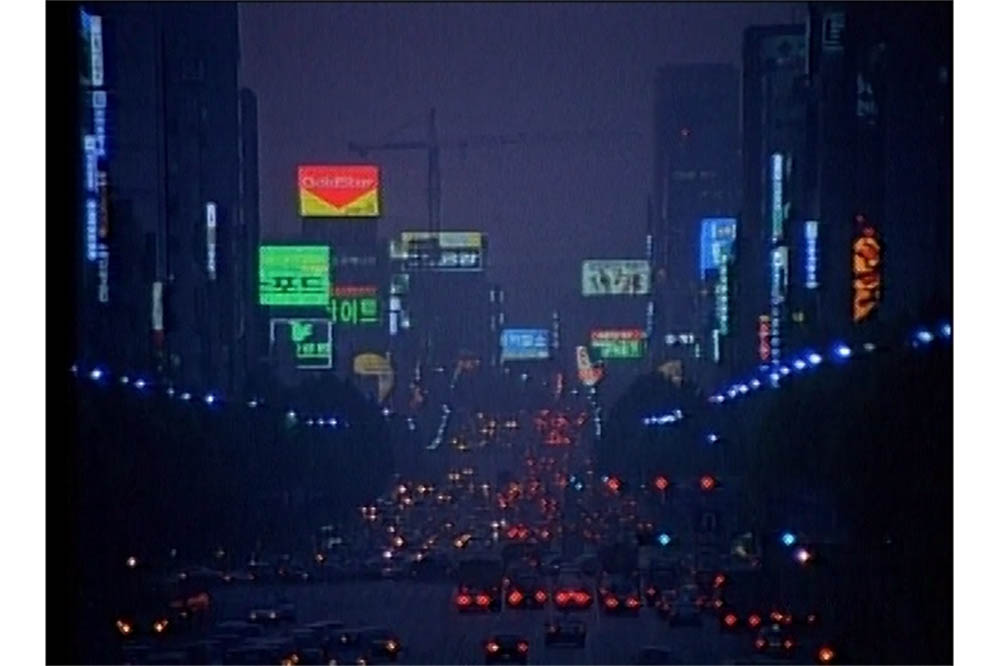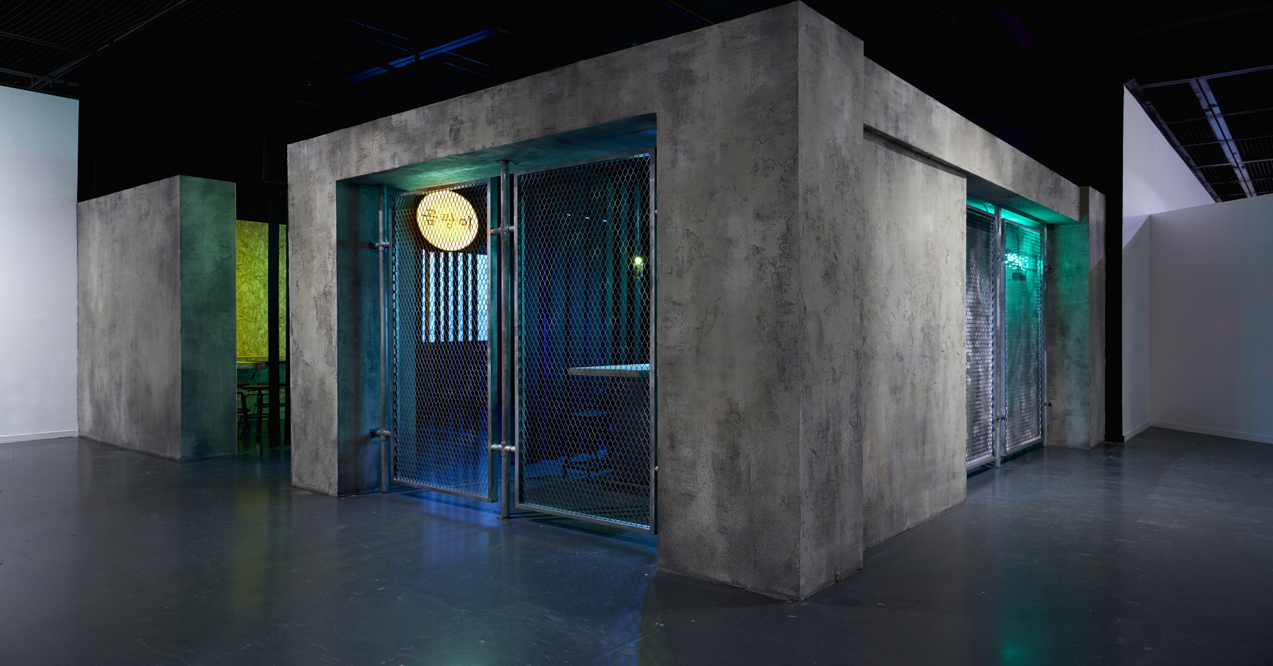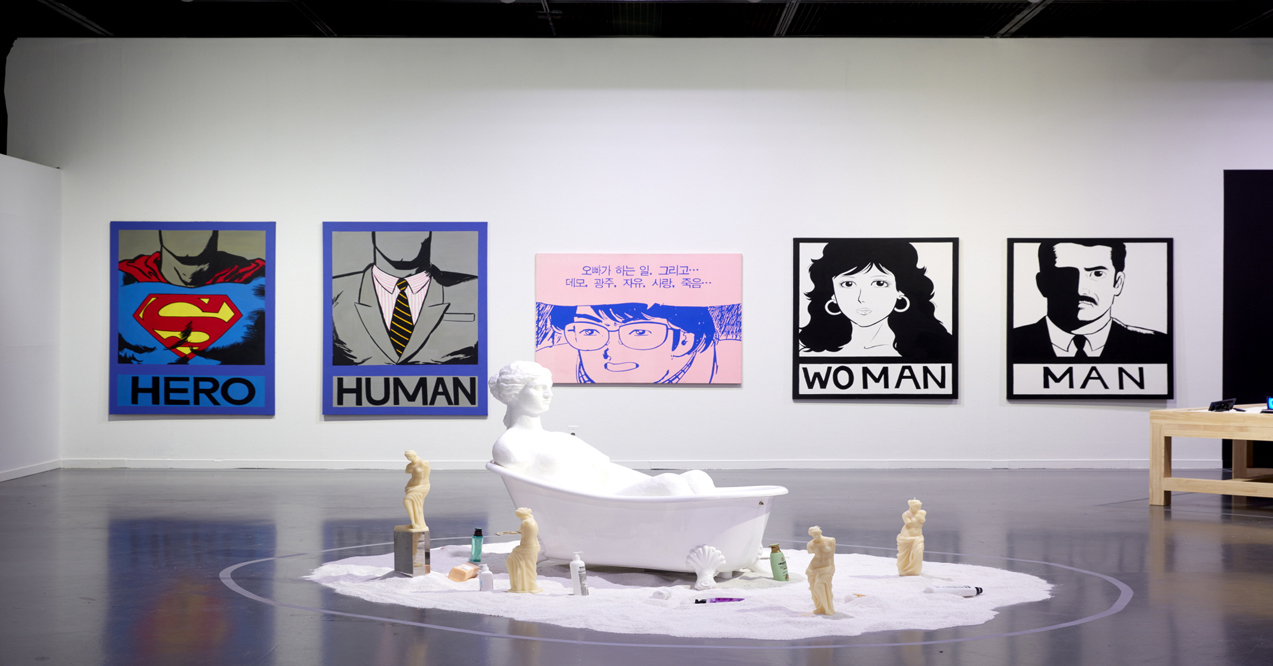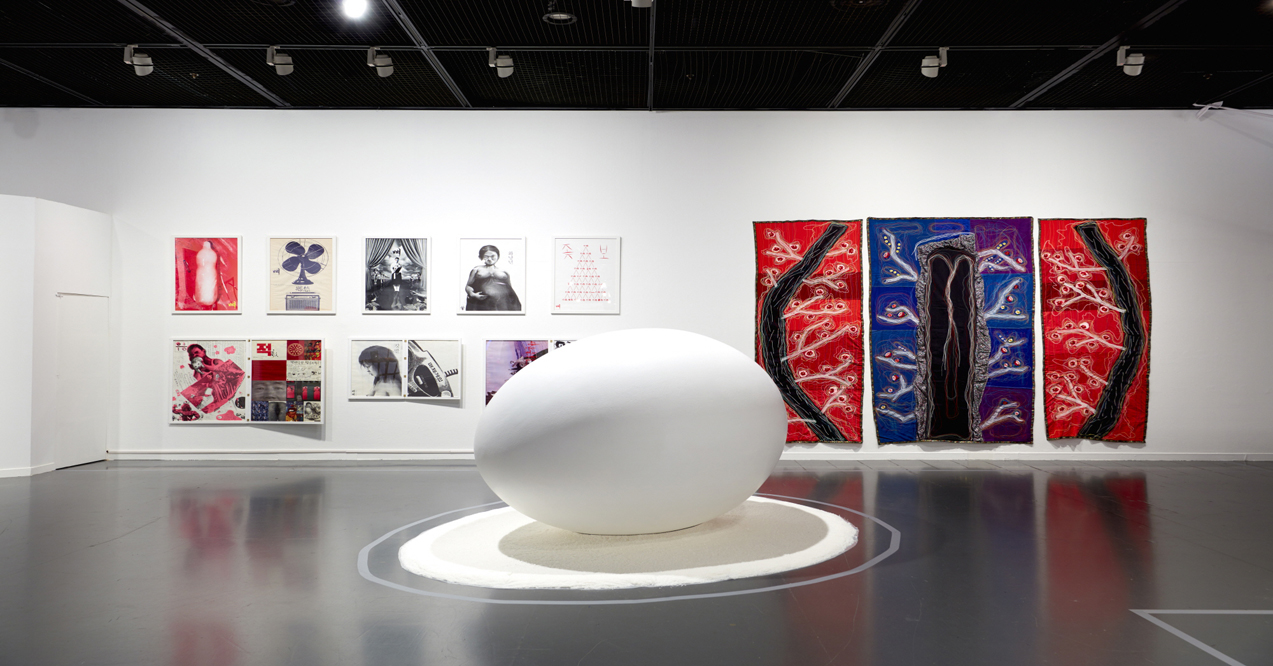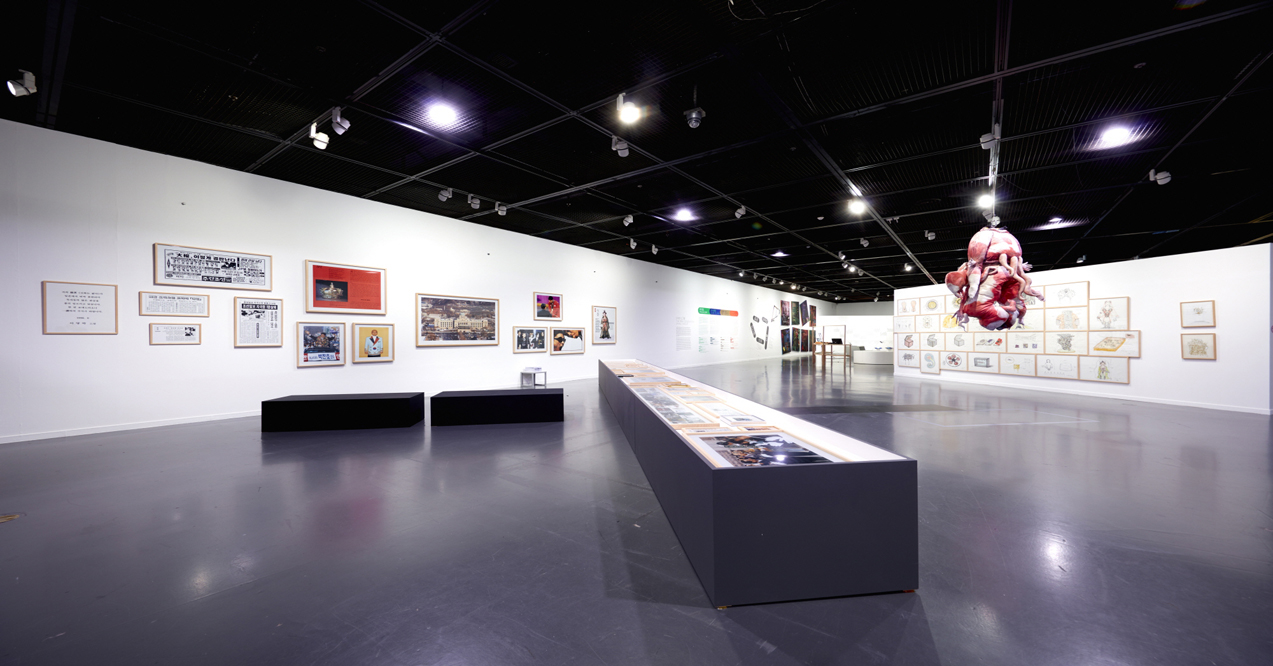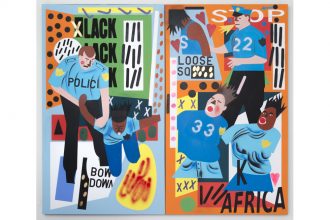It’s intimidating to absorb an institutional exhibition that spans a decade of a nation’s art scene, especially as an outsider. So a natural point of entry for interpretation arrives through comparisons: what makes Korean art of the 1990s different from, say, Western examples of the same time? What historical markers do they share? The well-known signifiers of the decade – the dawn of the internet, the solidification of neoliberalism, heightened consumerism, globalization – are all present, with the latter perhaps the most revealing in this context: the unprecedented cleaving-open of Korea to external influences, new communities and commodities, and the early attraction for a generation empowered by the world wide web. Yet, as the curators rightly note, the nineties are still considered too recent to be properly historicized, in Korea and beyond. We still lack the critical distance to identify exactly how those signifiers differ from our contemporary moment. In many ways, the innovations and promises of the ‘90s are still raw and, despite our best efforts, we have not yet learned how to control or combat their political repercussions.
As such, it’s a curious choice to structure the thematics of this exhibition around a quotation by French philosopher Jacques Rancière: “The essence of politics is dissensus. Dissensus is not the confrontation between interests or opinions. It is the manifestation of a distance of the sensible from itself. Politics makes visible that which had no reason to be seen.” This excerpt – perhaps the most straightforward definition of dissensus in Rancière’s work – could possibly be read as a call-to-arms, to shake us out of the obsession with simulacra and the reign of the visible that defined the period, and to attend to the inherent “questioning” born out of a work of art, beyond even the intentions of the artist. When read as indicative of the exhibition’s contents, however, the quotation raises more questions than it answers.
X: Korean Art in the Nineties – launched this winter in the Seoul Museum of Art (SeMA), at the height of enormous protests against the recently-impeached President Park, and amidst Brexit and the US election of Donald Trump – introduces a potential historical time-break, by first attempting to map the period (1987-1996, as they frame it), and thereby creating a topographical delineation from our present moment. The exhibition does so through the lens of certain key political events: the Gwangju Democratic Uprising in 1987, the Seoul Olympics in 1988, the collapse of the Eastern Bloc in 1989, the launch of Kim Young-sam’s government in 1993, the death of Kim Il-Sung and the collapse of the Sungsu Bridge in 1994, and the collapse of the Sampoong department store in 1995. These moments in Korean history shaped the artistic output of a generation, not necessarily as content but as catalysts.
What we learn from this archival exhibition is that a unique libertarian underground language was developed in Korean art between 1987-1996, one that might be called “de-ideological,” with respect to recent historical precedents: the more conservative Modernism of the ‘70s and the populist (Minjoong) People’s Art of the ‘80s. The exhibition points to a society of “liberation and consumption,” developed in the 1990s, that has been deepening and strengthening ever since.
In light of this, do the curators mean to suggest that a lack of outright ideological affiliations – the kind of relativism that they claim defined this decade – might align it with a politics of dissensus? What, in fact, is a politics of dissensus?
Rancière’s theory comes from an understanding of Kant’s Critique of Judgment and his suggestion that aesthetic judgments suspend the capacities of both reason (morality) and understanding (knowledge). Rancière is critical of the contemporary moral division of art between “socially-engaged” work and “testimony,” both of which instrumentalize art in favor of ethics. Art, for Rancière, is rather that which allows us to think contradiction: both the idea of art as autonomous or unsullied by morality (pure aesthetics), and the simultaneous sense that the work points beyond itself (politics). According to Claire Bishop, in her influential book Artificial Hells, “the aesthetic doesn’t need to be sacrificed at the altar of social change.” For Rancière, good art, in itself, is or at least proposes politics.
The works in X: Korean Art in the Nineties are not strictly apolitical, but they also don’t hold up to the kind of critical aesthetic embodied by the term “dissensus.” Bishop would argue that, to the contrary, the ‘90s were largely symptomatic of precisely the ethical or “relational’ approach to art that Rancière’s theory critiques. And this diagnosis rings true in this case, as well.
The exhibition’s opening video work The Story of a City (1994) by EJ Yong, is a documentary project highlighting daily routines over 24 hours in different parts of Seoul, recorded by 700 different people in diverse parts of the city, armed by the artist with video recorders. The piece shows Seoul in the “heyday” of the Sixth Republic, which started in 1987 and is ongoing. The Sixth Republic ushered in a widespread democratization of Korea, after years of authoritarian rule, that included massive cultural changes, wherein many new museums and galleries were established, and the Asian Games and Olympics were hosted. In its beautiful banality, the video embodies some of the values of the ‘90s: the idea that anyone can be an artist, can take part in the work of art, can make something of worth. This optimism is retained throughout the exhibition, where it’s clear that participation and a contagious faith in democracy reign.
In a section titled “The Garden of Hypothesis,” the show turns to technology as the great equalizer. Artist Moon Joo’s installation Unfinished Garden (1994/2016) is a Zen Buddhist karesansui (dry landscape), where MSG is placed instead of sand and monitors or screens stand in as the stone arrangements. This prophetic juxtaposition disguises a real concern at the heart of the ‘90s turn, when many Korean artists felt the rift between more traditional media and the influx of foreign cultural input. Next to it, Ahn Soo-Jin’s kinetic sculpture At that time (1994) – a rocking chair retrofit with motorized canoe paddles, propelling forward yet stationary – similarly shows this frustration born of nostalgia, the title echoing a grandparent’s tale.
In another section, several small collectives [SUB CLUB, Jindalrae (Azalea), 30 Carat] are showcased and defined by the specific issues they championed, from environmentalism to feminism. Underground cafés formed a big part of the Korean art scene in the ‘90s, and as a tribute, artist Lee Hyeong Joo’s Reflecting on Memory recomposes the most iconic of the decade by memory. Fragments of the cafés form the installation, offering visitors a near-fetishistic glimpse of the spaces in which many of the artists in the exhibition discussed and played out their artistic approaches.
Overall, the content of X: Korean Art in the Nineties is expansive and much of it impressive. Its variety of works certainly can’t be treated as a singular body. Yet the equation of the ‘90s “de-ideological” turn with an inherent “dissensus” seems a misguided theoretical appropriation. The shared defining characteristics of the ‘90s worldwide, and those specific to the Korean context, are rather coming to light now with a new face. The fresh optimism of globalization and the internet – which promised worldwide interconnectivity – has only in the last decade been exposed as a tool of global capitalism and government surveillance. The “de-ideological” period of the ‘90s compelled us to turn a blind-eye to these developments, and now, as we begin to historicize this supposedly democratic high-point, we are tasked with defining a new politics.

